This week’s set-piece analysis once again takes us back to Everton, where the Toffees used one of the concepts I talked about last week in my piece on American Football plays. The goal was scored by Richarlison but was eventually disallowed due to a player obstructing the goalkeeper’s view.
We can see Everton’s set up here and the position of the eventual goal scorer. Leeds mark man to man with one zonal marker in Patrick Bamford. Everton initially vacated the near post area, with players starting runs from deep and from central or back post areas. Richarlison starts as the player furthest from the taker.
Richarlison then uses a stick route here, and so moves forward initially before cutting across his marker and moving towards the near post.
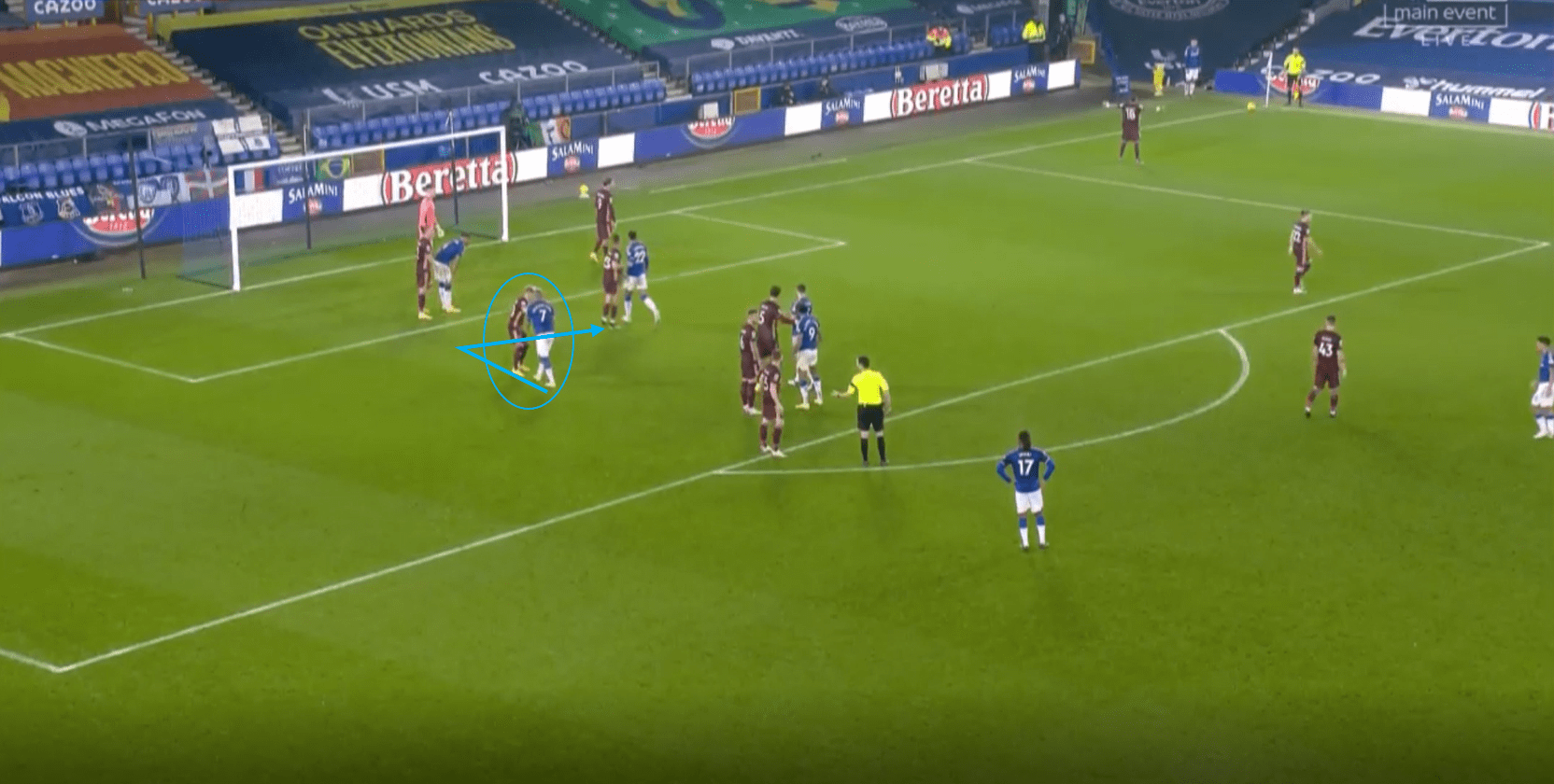
We can see, in this image, Richarlison starts to shift his weight and looks to explode from left to right, forcing his marker to react to this movement.
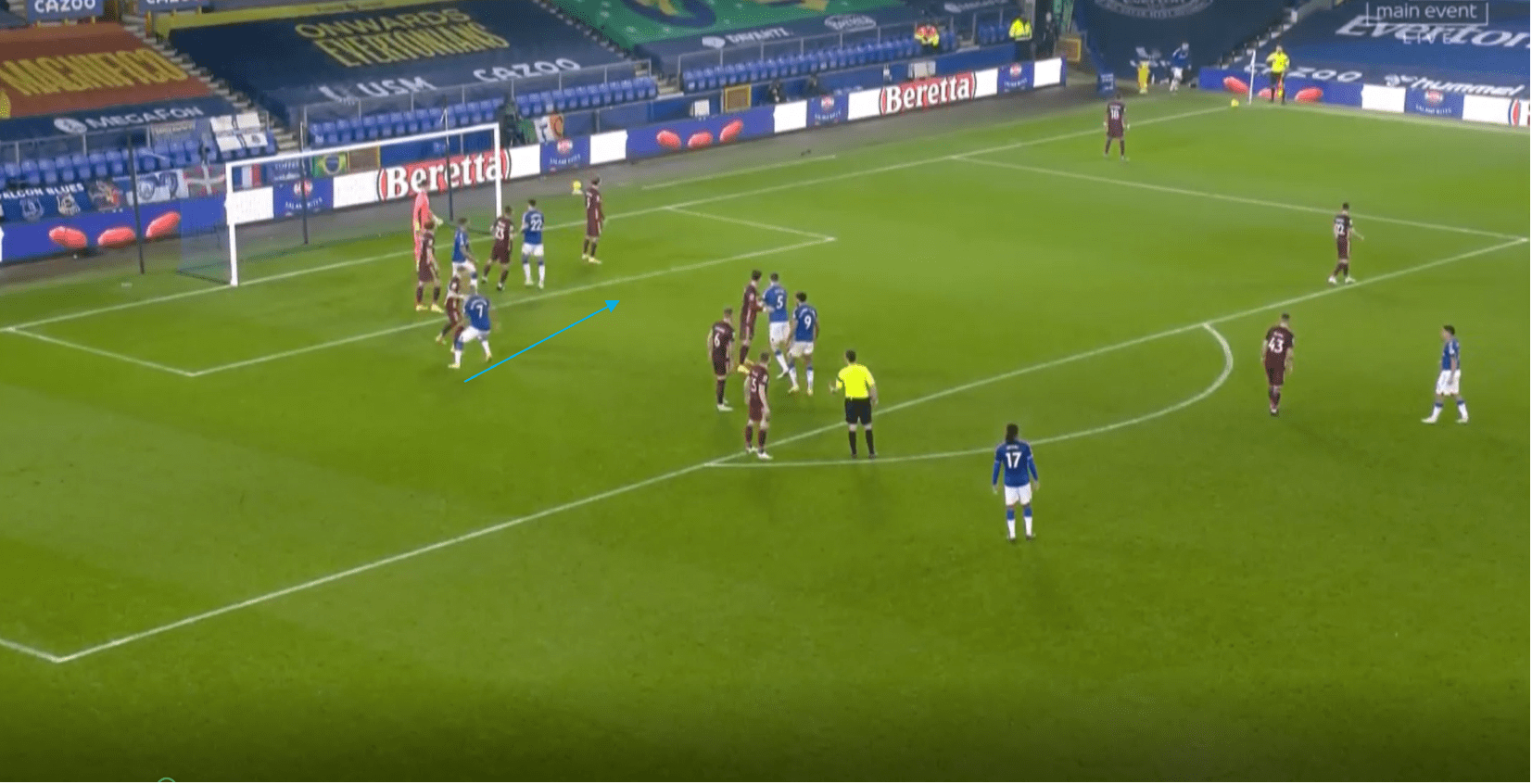
Since the defender’s movement is reactionary to Richarlison’s movement, separation is always going to be created, and Richarlison does a decent enough job of exploding off his left foot to move to the near post. As a result, we can see the initial separation he creates.
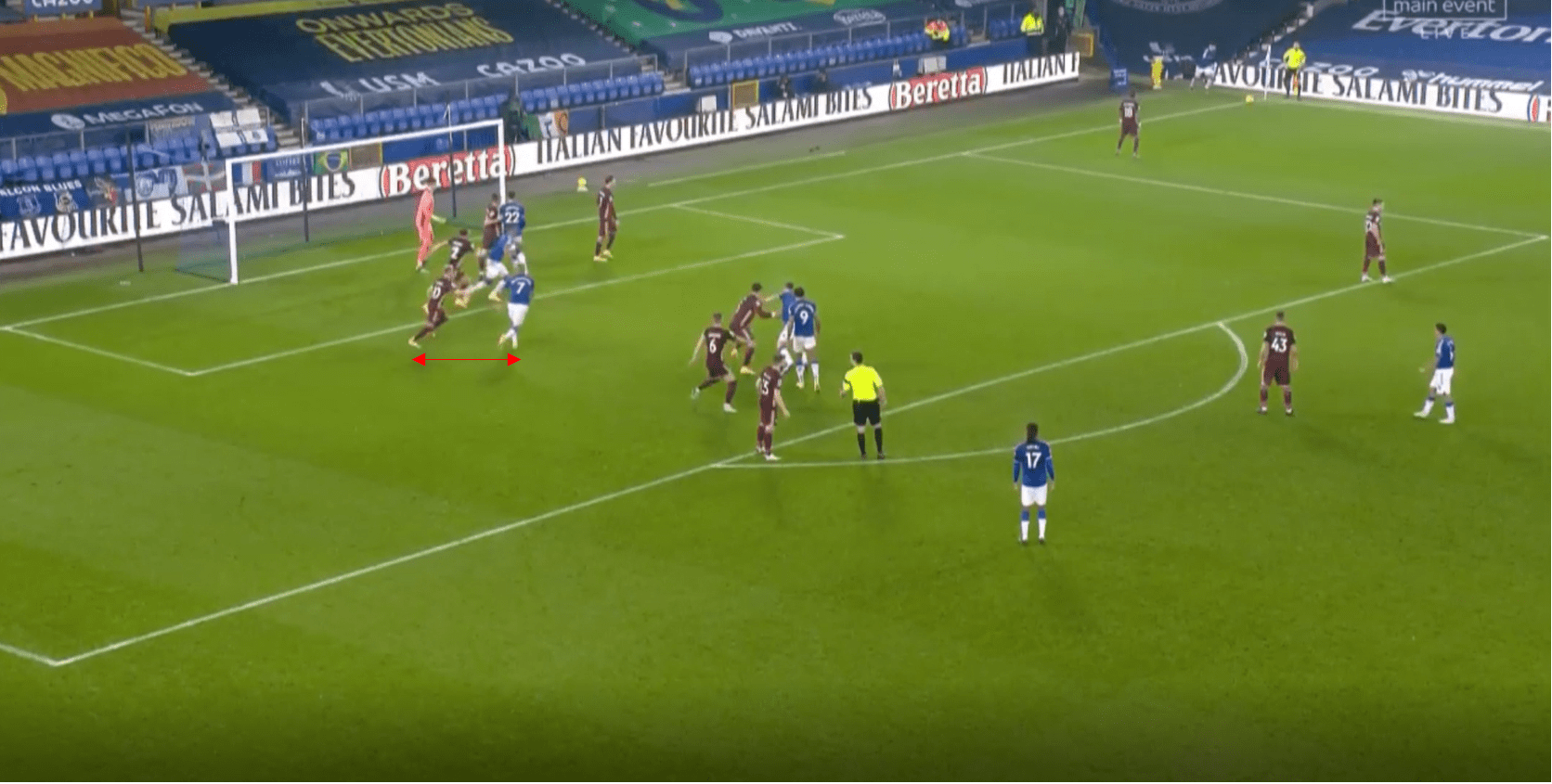
We can see separation is still created by the time the ball is delivered to Richarlison, and so, as a result he is able to get a header off at the near side of his marker to nod the ball past Illan Meslier.
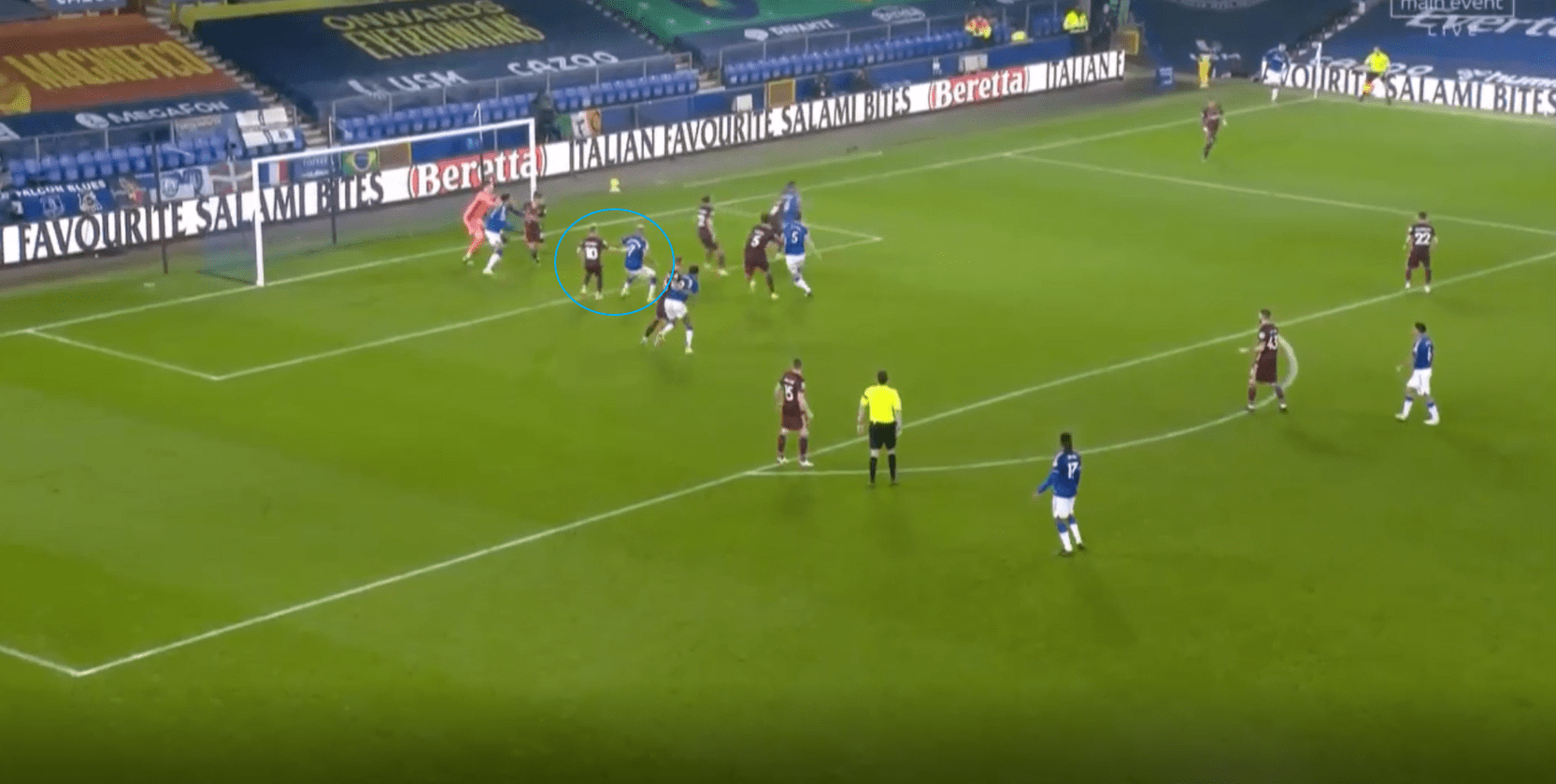
For anyone who hasn’t read my latest piece or is unsure of what the ‘stick concept’ is, I have explained it below.
Here we can see a player initially making a vertical run at a defender. This aims to put the defender on their heels and forces them to think about moving back, with some defenders biting on this and shifting their weight backwards. Once this is achieved, the player ‘sticks’ and explodes off their lead foot to make a lateral run. This explosion and shift of weight off the front foot is vital to achieving separation.
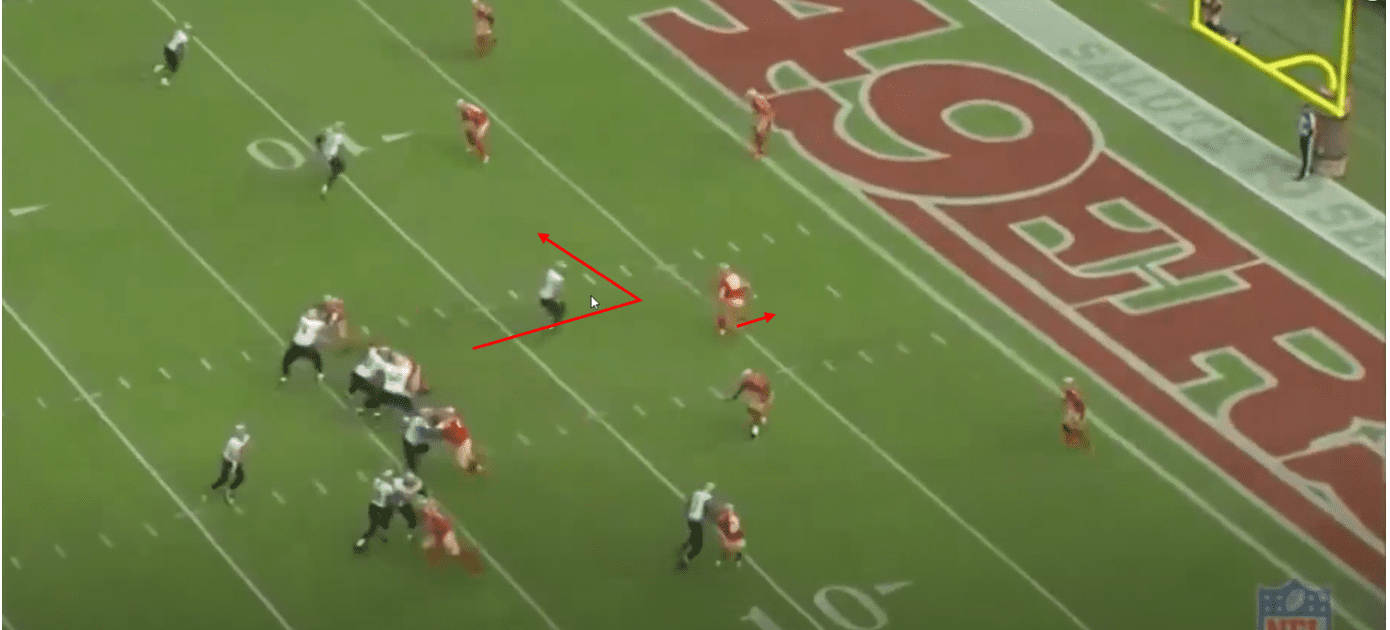
As a result of the stick, separation is created and the receiver has his back to his initial defender, and if needed, can shield the ball while catching to prevent an interception. Therefore, the quarterback has a pretty routine throw to the receiver for a catch. This play isn’t a long one that makes up lots of yards, but it is an efficient way of progressing the ball forward when needed.
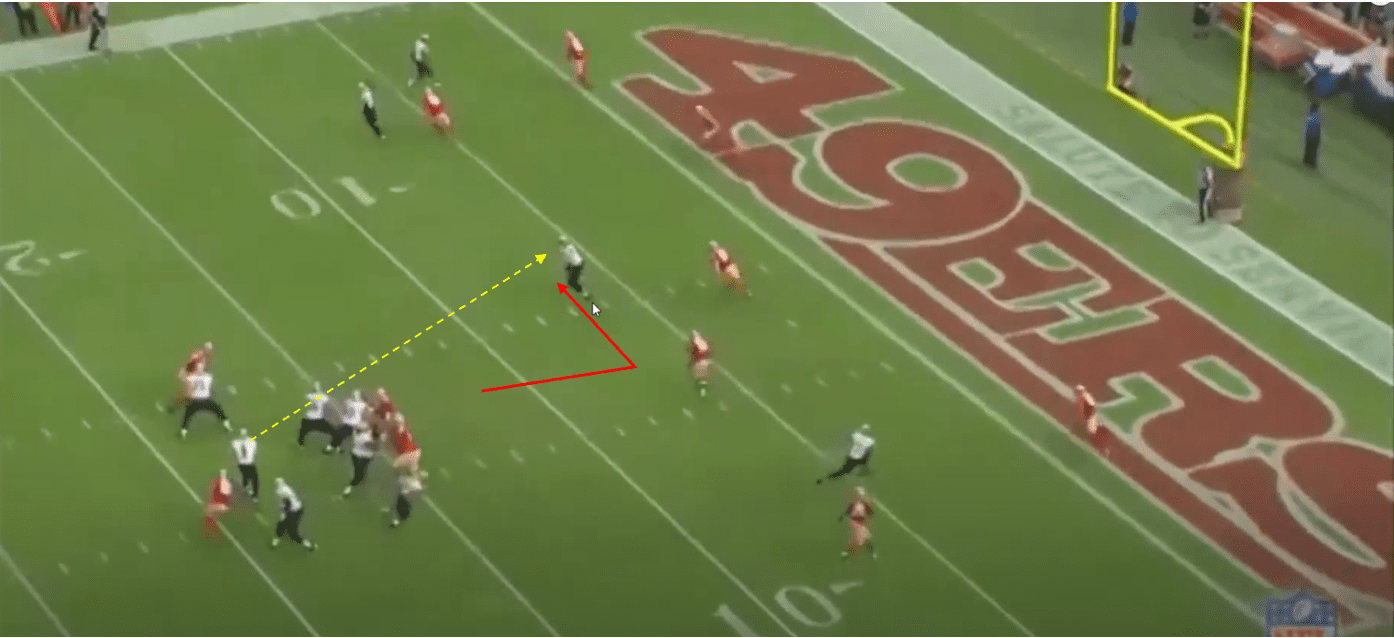




Comments